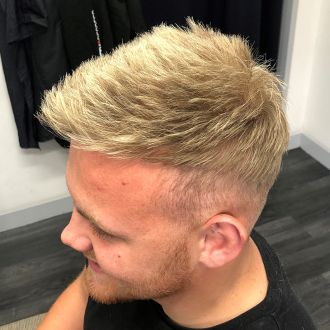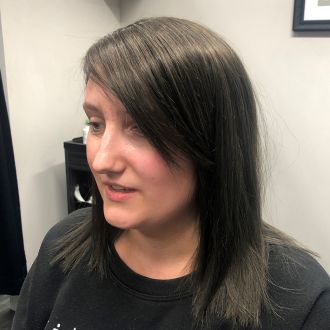Scalp Folliculitis
What is Scalp Folliculitis?
Scalp folliculitis (also known as Acne Necrotica Miliaris or Propionibacterium folliculitis) is an inflammatory skin condition that affects the hair follicles in the scalp. It is characterised by tiny, irritable pustules on the scalp, which can cause issues with the frontal hairline. They can be small or a large number of lesions, but they are hard to leave alone as they are very itchy.
What Causes Folliculitis?
You may get folliculitis if you have damaged hair follicles. Damage can occur in many ways but most commonly is caused by frequently scratching, rubbing your head or shaving. When damage occurs to a hair follicle it is more susceptible to infection. When a hair follicle becomes inflamed this is called folliculitis and can be itchy, red, and painful.
Scalp Folliculitis Symptoms
The most common Scalp Folliculitis symptoms include:
- Clusters of small, red bumps on your scalp which may be itchy/tender
- Sores with yellowish-brown scabs
- Sores that drain pus
- Burning or stinging sensation
- Pain or tenderness
When folliculitis occurs in the scalp it can result in permanent hair loss unless treated appropriately. If left untreated, these bumps can form scars which can cause permanent damage to the hair follicle and hair will cease to grow. The condition can be caused by a number of factors including an overabundance of oil on the scalp, bacteria, or staphylococcus aureus, but if you notice the condition early enough and commence treatment the prognosis is good and permanent hair loss should not occur.
Types of Folliculitis
There are two main types of folliculitis – these are superficial and deep. The superficial type involves part of the follicle, and the deep type is usually more severe involving the entire follicle.
Forms of superficial folliculitis include:
The most common type of folliculitis is bacterial. This occurs when hair follicles become infected with bacteria, usually Staphylococcus aureus (staph). Staph bacteria live on the skin all the time, but this causes problems when it enters your body through a cut or other wound. Bacterial folliculitis is characterised by itchy, white, pus-filled bumps.
With pseudomonas folliculitis, one to two days after exposure to the bacteria you may develop a rash of red, round, itchy bumps. This bacteria is found in many places, including hot tubs and heated pools where chlorine and pH levels aren’t well-regulated.
This is a skin irritation caused by ingrown hairs. It mainly affects men with curly hair who shave too close and is most noticeable around the hairline.
This type is caused by a yeast infection, it produces red, itchy pustules.
Forms of deep folliculitis include:
This is similar to razor bumps but deeper, this type typically affects males who have begun to shave.
This type sometimes develops if you’re receiving long-term antibiotic therapy which can disrupt the normal bacterial balance on the skin.
Boils occur when hair follicles become deeply infected with staph bacteria. A boil usually appears suddenly as a painful pink or red bump.
People who have a weakened immune symptom are more prone to develop this. The symptoms of eosinophilic folliculitis include intense itching and recurring patches of bumps and pimples that form near hair follicles of the face and upper body.
Our Experts






At-Home Treatment for Scalp Folliculitis
Mild/moderate Scalp Folliculitis can be treated with an array of at-home treatments. These include:
Antibacterial Soap
Ideal if your scalp folliculitis is present around the hairline, washing with an antibacterial soap twice a day and gently drying with a clean town is a good way to reduce the likelihood of the infection spreading. Ensure you wash with lukewarm water as hot water can cause further irritation. Antidandruff shampoos containing antifungal agents such as ketoconazole or ciclopirox can sometimes also be helpful.
Soothing Creams and Antibacterial Ointments
Using Cortisone cream on the affected area can help to soothe inflammation and itch of scalp folliculitis. To help target the bacteria, topical antibiotic ointments are ideal and are easily available at pharmacies and supermarkets. Using a warm compress on the affected area is also a good way to relieve discomfort and assist with draining any pus from sores.
Scalp Hygiene
Due to Scalp Folliculitis being a bacterial-based infection, good scalp hygiene is essential in preventing its spread and recurring flare-ups. Washing hats, headscarves, and other garments which come in regular contact with your scalp will limit your chance of the infection returning. Once the infection has subsided, it is essential to wash your scalp regularly to prevent the build-up of products and oils which can commonly irritate hair follicles.
When to seek medical advice and treatment for Scalp Folliculitis
If you are having ongoing, recurring flare-ups, it is important to seek medical advice to avoid scarring and permanent hair loss. Booking an appointment with our hair loss experts will help you to treat and maintain your scalp health.